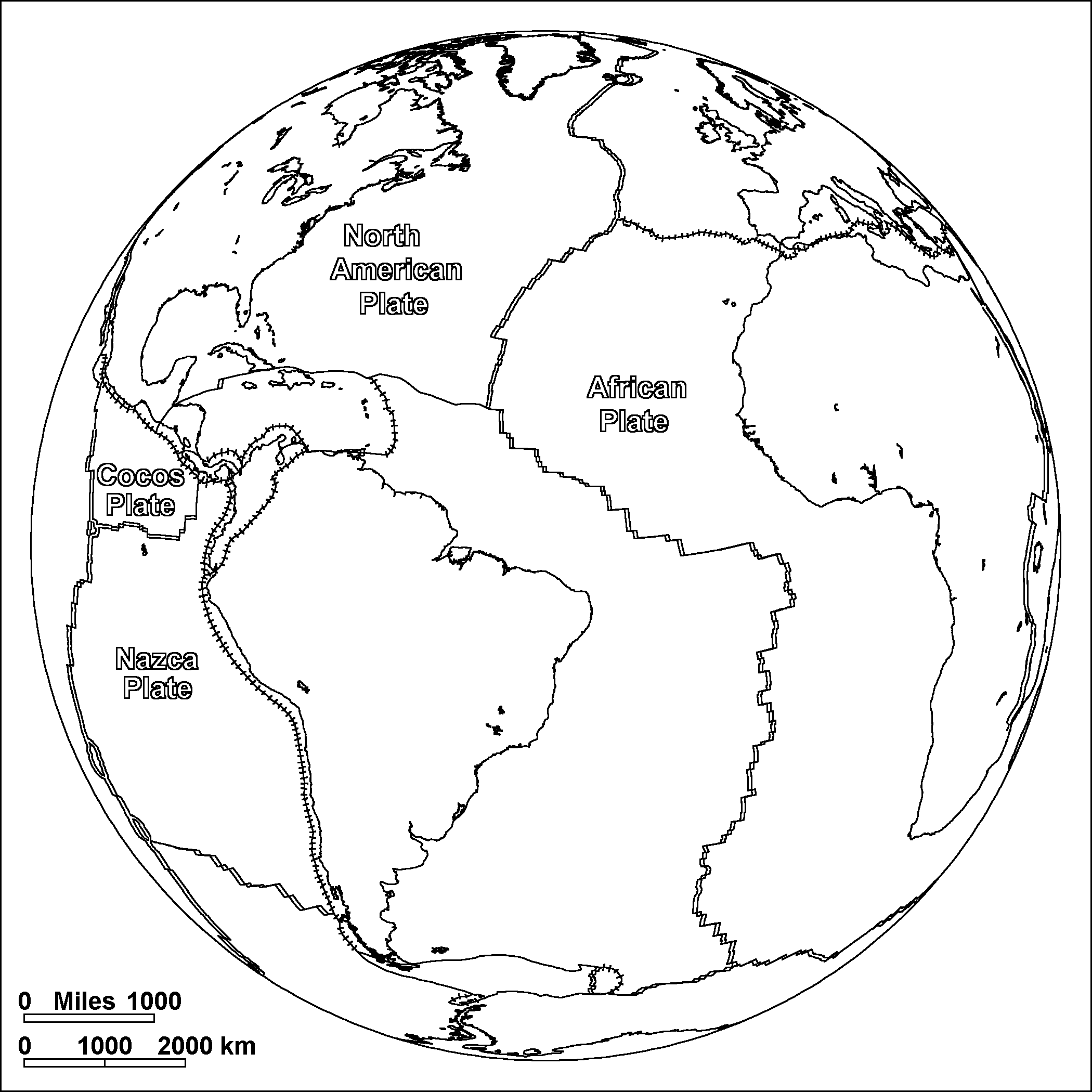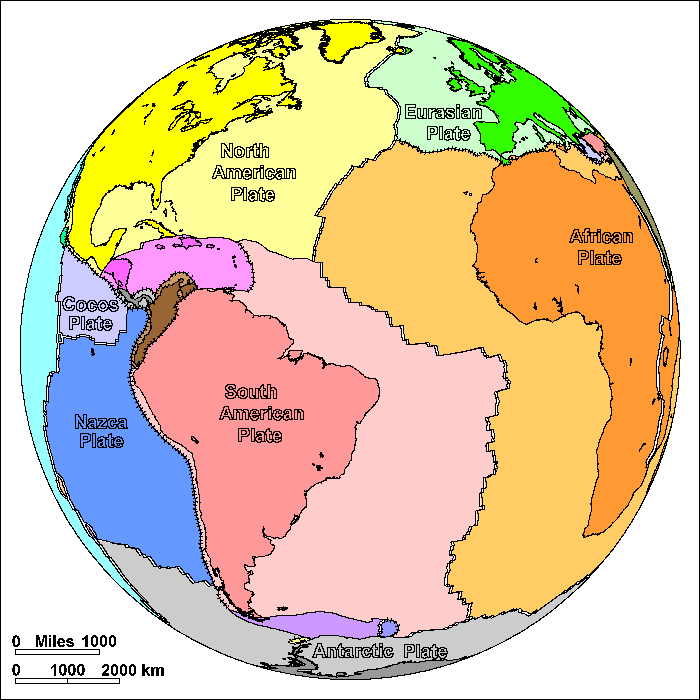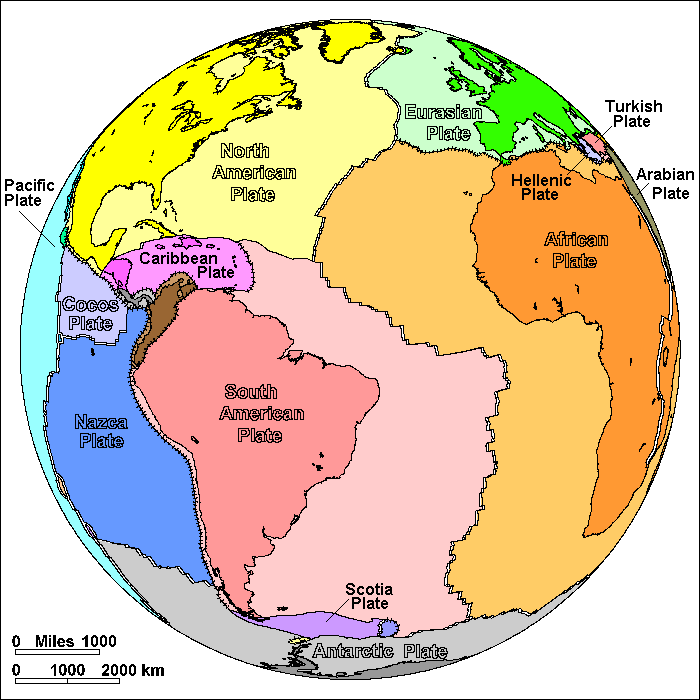Plates of the Atlantic Ocean
Steven Dutch, Professor Emeritus, Natural and Applied Sciences, University of Wisconsin - Green Bay
On these diagrams, pairs of parallel lines show boundaries where plates are spreading apart, lines with ticks show boundaries where plates are colliding, and simple lines show other types of boundary. These include places where plates are simply sliding past one another, places where motions are too complex to portray simply, and places where new plate boundaries may be forming.
The remarkably parallel coastlines of the Atlantic were the inspiration for the first speculations about continental drift. North America, with Eurasia still attached, broke apart from Africa about 180 million years ago, followed by South America. Eurasia and North America began to separate about 80 million years ago. Between North and South America, a number of small plates moved in a very complex way to create Central America.

Possible Coloring

Labeled Features
In addition to the large plates, significant small plates are labeled. Very small plates are not labeled.

Return to Geology Coloring Book Index
Return to Professor Dutch's Home Page
Created 25 July 2009, Last Update 15 January 2020